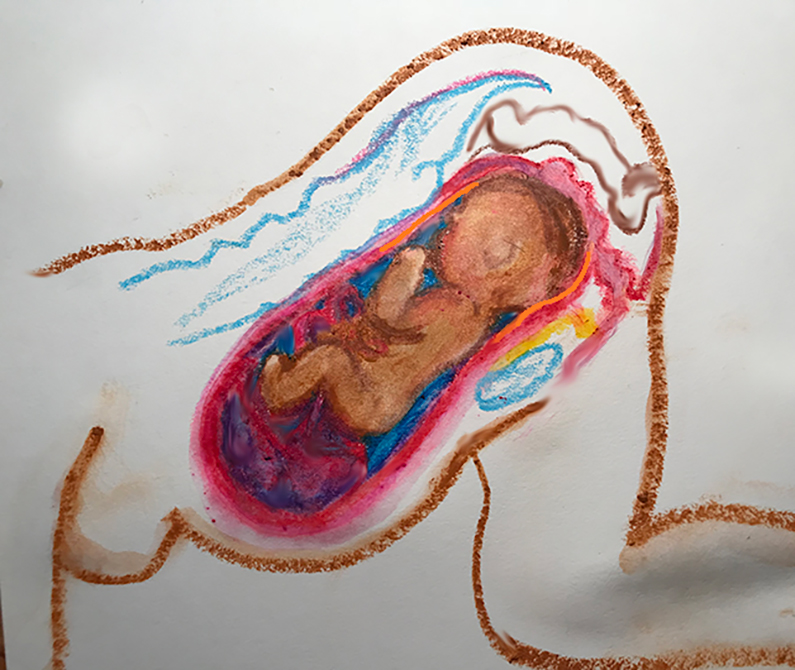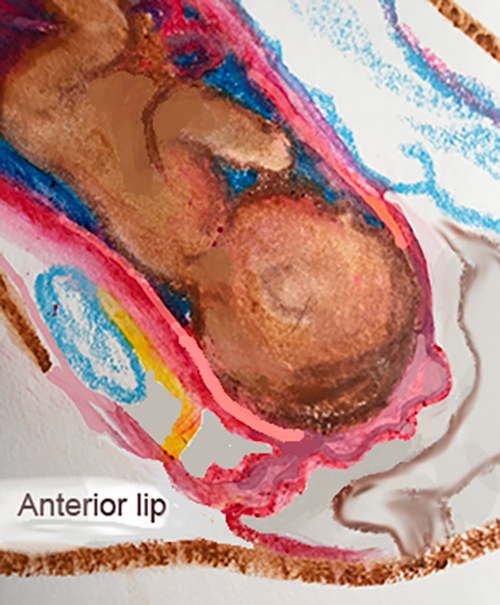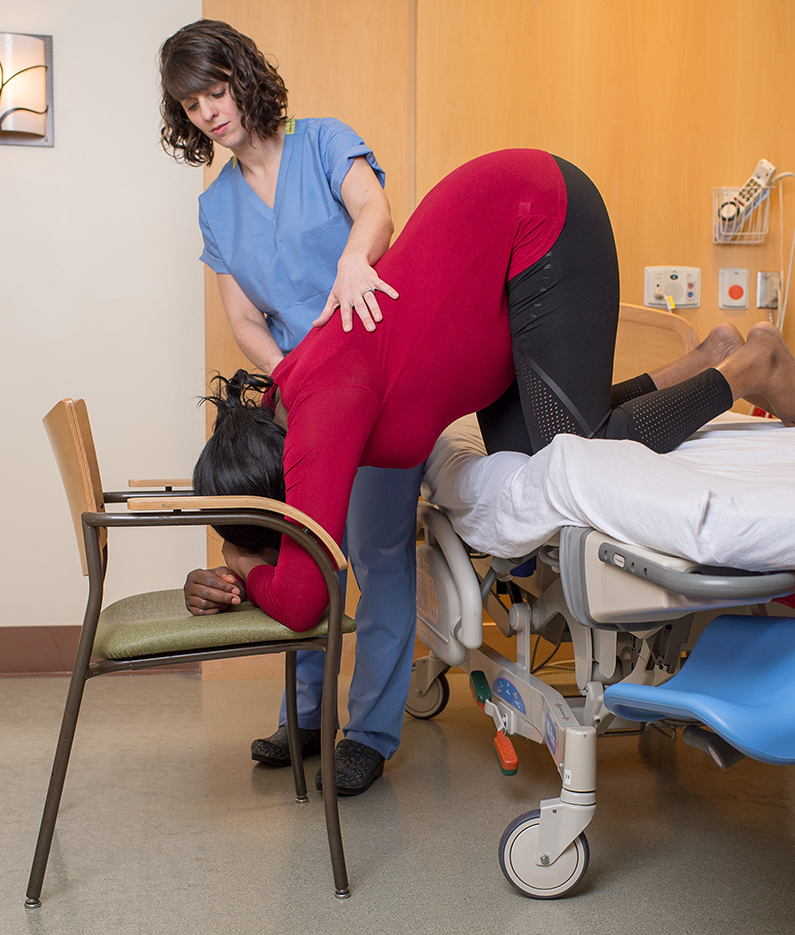
This week is Part 2 of our discussion on the potential of Dynamic Body Balancing techniques in caring for a labor with a cervical lip. Read Part 1 here.
Body balancing techniques specific to releasing a cervical lip include Forward-leaning Inversion through one contraction. See guidelines for safety and medical contraindications before proceeding. Forward-leaning Inversion is a technique that deserves more use!
 Anterior cervical lip
Anterior cervical lip
Force techniques discussed for a lip include pushing to see if the lip with yield or the provider manually pushing the cervix open. I know that pushing a lip “out of the way” is common. We don’t want to risk injury by anyone pushing intentionally on a non-yielding lip. Forceful opening of the cervix is best avoided unless baby’s life truly and undeniably depends on it.
This week, I promised to list other options used by midwives for releasing a cervical lip in late labor and they include:
My favorite positional strategy combines the knee-chest position with a technique I learned from a yoga magazine!
 Cervical lip in hands-and-knees birth position
Cervical lip in hands-and-knees birth position
When the urge to push is uncontrollable and overwhelming, the birth giver goes into the knee-chest position on the bed and rests either check on the mattress. A pillow can be under the breasts to ease the neck from strain. Now the technique; their tongue is extended far out of the mouth while the face turns “up” away far from the chest. Now, she pants. Face up and panting the body can not push on the remaining cervix. It works well. But be mindful, it’s not fair to do something bottom’s up and panting alone! The partner or doula maintains eye contact and joins in the panting
The mother from the previous week writes back:
“Thanks for the quick response! I have read about the many ways to deal with a lip, but not much on prevention, which is my goal. Is it even normal for someone to develop one every birth? My midwife seems to think it’s not unusual, but I’ve never heard of anyone else with this problem.”
Your situation is not that usual, not having a lip for hours. A lip for a long time is often a fetal positioning issue but sounds possibly like a cervical ligament or fascia issue from your description.
 Forward-Leaning Inversion
Forward-Leaning Inversion
Forward-Leaning Inversion (FLI) may be the preventative as well as the solution. Do an inversion for 30 seconds once a day in the last half of pregnancy. Include some Chiropractic adjustments of the pelvis and neck. The inversion may help the cervical ligaments become symmetrical and more responsive. They will not open the cervix early when balanced from FLI.
Minerals in your diet (root veggies and enriched salts, for instance) and oil supplementation have been suggested for ligament health (but not mineral oil!) I love Nordic Naturals for fish oil supplementation but there are also some other good brands including fermented oils for those who love the fermented foods. Calcium magnesium, Vit. E (not more than 800 IU), Red Raspberry Leaf tea bulk, etc. Please consult a holistic nutritionist that knows body work concepts for a good recommendation for what to eat or take.
After a Forward-Leaning Inversion, begin with the hands-and-knees birthing position. Now swish the pelvis like a happy puppy, shaking its tail side to side. A contraction or two may be all that’s necessary for this move to shift the cervix around baby’s head. Think of the ligaments shifting over the head like a necklace coming up and off.
[tribe_events_list limit=”4″]
One of our most beloved products, now with subtitles in English, French, and Spanish, offering expert support to reduce intervention and increase comfort throughout pregnancy and birth.